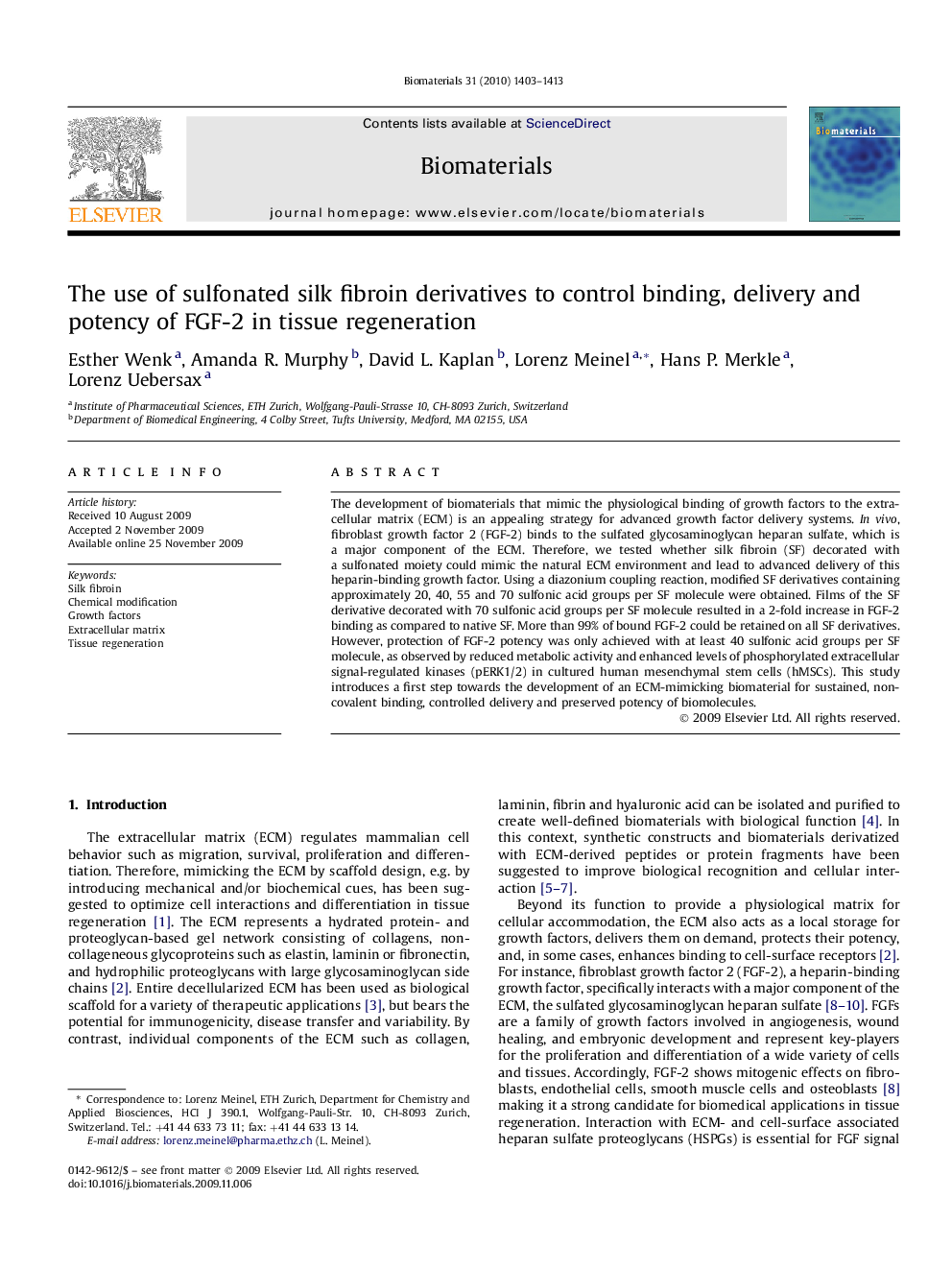| Article ID | Journal | Published Year | Pages | File Type |
|---|---|---|---|---|
| 9846 | Biomaterials | 2010 | 11 Pages |
The development of biomaterials that mimic the physiological binding of growth factors to the extracellular matrix (ECM) is an appealing strategy for advanced growth factor delivery systems. In vivo, fibroblast growth factor 2 (FGF-2) binds to the sulfated glycosaminoglycan heparan sulfate, which is a major component of the ECM. Therefore, we tested whether silk fibroin (SF) decorated with a sulfonated moiety could mimic the natural ECM environment and lead to advanced delivery of this heparin-binding growth factor. Using a diazonium coupling reaction, modified SF derivatives containing approximately 20, 40, 55 and 70 sulfonic acid groups per SF molecule were obtained. Films of the SF derivative decorated with 70 sulfonic acid groups per SF molecule resulted in a 2-fold increase in FGF-2 binding as compared to native SF. More than 99% of bound FGF-2 could be retained on all SF derivatives. However, protection of FGF-2 potency was only achieved with at least 40 sulfonic acid groups per SF molecule, as observed by reduced metabolic activity and enhanced levels of phosphorylated extracellular signal-regulated kinases (pERK1/2) in cultured human mesenchymal stem cells (hMSCs). This study introduces a first step towards the development of an ECM-mimicking biomaterial for sustained, non-covalent binding, controlled delivery and preserved potency of biomolecules.
